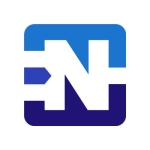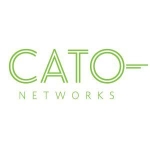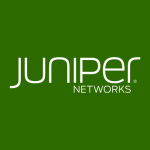Our organization utilizes Fortinet FortiGate for SD-WAN. All business units within our organization connect to the SD-WAN, which is constructed using Fortinet devices.
The primary reason we implemented Fortinet FortiGate was to enhance connectivity. Our previous reliance on MPLS resulted in low bandwidth and high costs. By transitioning to SD-WAN devices and leveraging common ISP connections, we have achieved two significant goals: substantial cost savings and increased flexibility in configuring device communications across our various plants.
FortiGate offers us the capability to provide visibility into and segmentation of our industrial devices. We are currently implementing this for the LAN, and we are migrating firewalls to Fortinet FortiGate devices. In this process, we are separating the operational network from the IT network.
Knowing that some of Fortinet's devices can be used in harsh environments that's nice to have. But that's something that is not needed right now just because we are only using them in very few places. These devices are specifically used to prevent intrusions in harsh environments.
These devices help to control network traffic with OT-specific protocols. The LAN firewalls we have implemented are purchased with the functionality of network-specific modules to enable the management of network traffic with OT-specific protocols.
The approved offerings help us achieve our budgetary goals. We are adapting the budget to align with the devices provided by Fortinet. We are doing this because we can utilize Fortinet. Therefore, all of our budgets should take this into account as well.
The decision to utilize Fortinet stems from its ability to integrate with our preferred vendors. We have plans to implement both ClearPass and Nozomi as part of our OT cybersecurity strategy, both of which offer API-based interfaces for connecting to FortiGate devices. This interoperability is crucial for our organization.
The combination of FortiGate and FortiManager provides a comprehensive overview of all the firewalls we manage. It is very convenient to have everything centralized in one place.
FortiGate has helped reduce the risk of cyberattacks that could disrupt our production, which is one of our primary goals.
We were not affected by any cybersecurity attacks that would have impacted our production operations. However, we have a comprehensive plan in place to address such incidents. FortiManager enables us to block essential protocols and implement security measures across all business units if we detect a security breach in one area. This centralized approach ensures that the security measures we implement are consistently applied throughout the organization.
FortiGate has aided in centralizing the management of our network and security operations. The impact of this on the operational efficiency of our industrial network depends on how we organize it. Centralized management has significantly simplified management tasks. However, we require a dedicated team capable of addressing the diverse needs of different plants and business units, implementing necessary changes, and resolving any issues that arise. A single point of contact facilitates this process. In this regard, we have not only improved operational efficiency but also consolidated our management structure, reducing the need for multiple teams scattered across different countries.
FortiGate provides us with actionable data that helps us make informed decisions about the appropriate actions to take. Additionally, we utilize FortiAnalyzer to analyze the type of traffic we are experiencing, potential issues, and other relevant information. Furthermore, we monitor CPU memory, bandwidth, and other metrics associated with various IP connections using Fortinet devices. This monitoring is conducted across multiple firewalls. By employing these tools, we can ensure that any changes we make are the correct ones and are made for the right reasons.
The implementation of Fortinet's Security Fabric has significantly enhanced the security of our industrial control system. Previous solutions were unable to effectively manage the diverse protocols employed in this environment, resulting in operational and technological limitations. However, with the introduction of the new security fabric, we are now able to address these challenges and achieve a more robust security posture.
The Fortinet Security Fabric helps us reduce our mean time to remediation. With all its tools and centralized management, it's much easier to identify and resolve issues, leading to improved overall security posture.
Fortinet helped mature our approach to cybersecurity for protecting our industrial equipment.
The flexibility and ease of configuration are the most valuable features.
Overall, we are satisfied with the product. However, we encounter occasional capacity issues. The FortiAnalyzer, being a hardware appliance, has limited expansion capabilities. As our organization has grown, we've outpaced the FortiAnalyzer's performance. The inability to scale the FortiAnalyzer to match our growth necessitates the purchase of new hardware. This is an area that could be improved. If we anticipate reaching the size of six countries within the next five years, investing in a solution that can accommodate such growth would be more cost-effective than repeatedly purchasing new hardware. The ability to scale the FortiAnalyzer in tandem with our growth would be a significant improvement.
I have been using Fortinet FortiGate for over three years.
FortiGate is now stable. We experienced some difficulties in the beginning, possibly due to some bugs we encountered. However, for approximately the past six months, we have been closely monitoring various ratings for FortiOS versions. As a result, we are currently running only on mature versions. Since then, we have observed that the device is significantly more stable than before.
The scalability for the FortiManger and the devices themselves is a nine out of ten but for the FortiAnalyzer it is a six out of ten.
On the few occasions that we have needed to use technical support, we have found them to be responsive.
We used different solutions such as Cisco, Watchguard and Sophos in different countries, and one of the reasons we switched to FortiGate was to standardize what we used in all the countries.
The FortiManager is one of the biggest advantages they have. From a single management point, we can manage all the devices connected to the support manager. This is something I haven't seen before. So, in that sense, I would say that the most important difference between FortiGate and other vendors is the FortiManager.
Due to the extensive network, the deployment spanned several months; however, on a site-by-site basis, each deployment was completed within a few hours. We had a minimum of two people per country involved in the deployment with 1-2 people from Central IT.
It was a mixed team vendor - in-house. The vendor expertise was really good and I would rate it on a 9 out of 10.
FortiGate's pricing falls within the mid-range when compared to other leading firewall solutions. While it's more expensive than Sophos, it's more affordable than Palo Alto.
I would rate Fortinet FortiGate eight out of ten.
We have FortiGate deployed across multiple locations with 120 firewalls.
I suggest testing FortiGate. For organizations looking for an affordable solution, with good management and initial management, Fortinet FortiGate is the right choice.
















